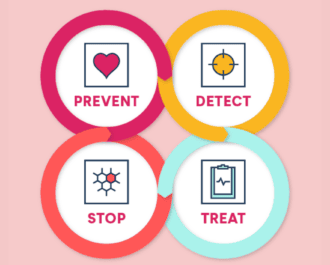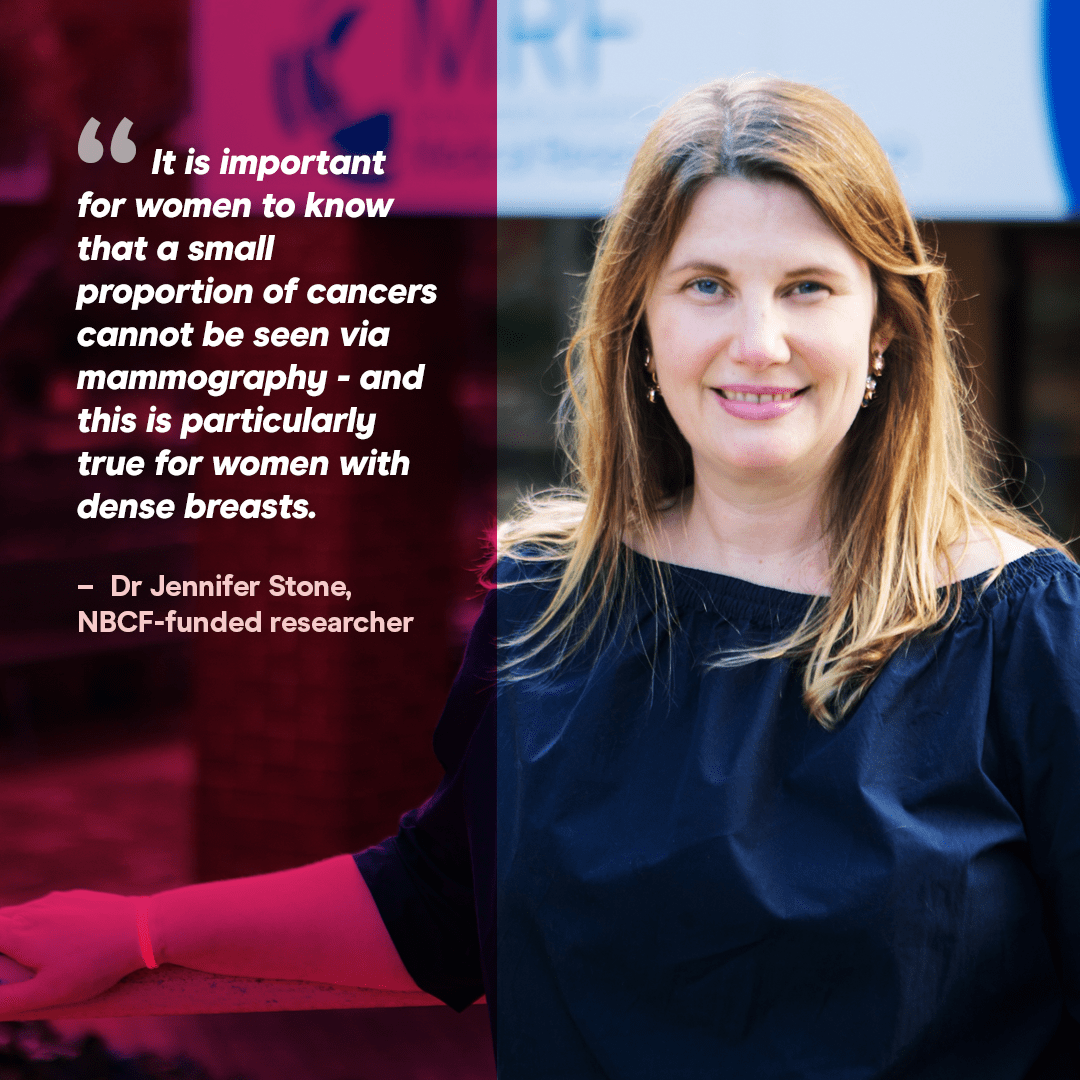
Breast density is a known risk factor for breast cancer. The breast is comprised of a mixture of milk glands, milk ducts and supportive tissue (dense) and fatty tissue (non-dense). The proportions of these tissue types vary from woman to woman. Approximately 8% of women between 40 and 74 years of age have ‘extremely high density’ breast tissue.1 These women have a 50 to 70 percent higher risk of developing breast cancer.1 In addition, dense breast tissue appears similar to tumours on a mammogram, which can hide the presence of cancer.
It is not possible to tell the density of your breast without having a mammogram. A dense breast is not necessarily firmer, and cannot be detected by touch.
This gap in knowledge has now been addressed by the US Congress, who have directed the Food and Drug Administration (FDA) to establish minimum reporting standards. Mammogram reports in the USA will now have to state:
- A qualitative assessment of the individual patient’s breast density.
- An explanation of the effect breast density has on hiding the presence of breast cancer on a mammogram.
- A reminder to patients that they should talk with their medical care providers if they have any questions about their breast density.
 NBCF-funded researcher, Dr Jennifer Stone from the University of Western Australia, welcomed the news of the forthcoming FDA standards. “Mammographic screening is the best test to detect breast cancer in asymptomatic women, even those with dense breasts,” she said. “However, it is important for women to know that a small proportion of cancers cannot be seen via mammography – and this is particularly true for women with dense breasts.”
NBCF-funded researcher, Dr Jennifer Stone from the University of Western Australia, welcomed the news of the forthcoming FDA standards. “Mammographic screening is the best test to detect breast cancer in asymptomatic women, even those with dense breasts,” she said. “However, it is important for women to know that a small proportion of cancers cannot be seen via mammography – and this is particularly true for women with dense breasts.”
Dr. Stone’s research investigates whether Australian women are aware of the importance of breast density. This includes determining what action women take, their perceptions of their breast cancer risk, and their emotional response after being notified that they have dense breast tissue.
In Australia, programs such as BreastScreen Western Australia have been notifying women if they have dense breasts for over a decade. The work of Dr. Stone and her colleagues will continue to provide more information on the implications of dense breast tissue and improve management of women with dense breasts.
- Sprague BL, Gangnon RE, Burt V, et al. Prevalence of mammographically dense breasts in the United States. J Natl Cancer Inst 2014;106(10). Available for free online at https://academic.oup.com/jnci/article/106/10/dju255/929309
More News Articles
View all News


